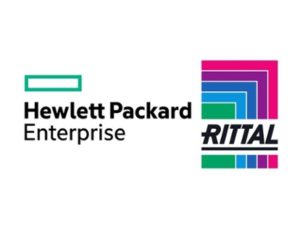
As service technicians for the leader in IT cabinets and cooling solutions, we have a unique perspective on the day-to-day needs of IT facilities managers. Short story: they have a lot of questions, and we hear most of them.
IT cooling is, no surprise, a hot topic. With energy usage and costs steadily increasing and numerous options available, climate control equipment within IT cabinets has never been more important or more misunderstood.
Before sharing the top 10 IT application questions that service technicians hear from IT facilities managers (and our answers), let us first address some “service” issues that may not be service related, but they are useful for this article.
Upfront Design Considerations
A lack of proper upfront design can create problems that cannot be easily fixed from a serviceability standpoint, including failing to design for future capacity needs. Another is simply not accounting for the demand for more space that will inevitably come. For instance, upgrading IT cabinets to the latest cooling system is a smart decision, yet that can be a challenge if there is not enough room in the aisle to move and install equipment.
Another design consideration is redundancy. Even the slightest bit of downtime may not be acceptable, depending on how critical the IT application is to the bottom line (a minute of downtime may cost an organization millions). In this case, full redundancy is a must. In other IT applications, the cost/benefit analysis shakes out differently; being down for a brief time isn’t as critical. This may be a good example of having on-site spares available to quickly get cooling back up and running.
“Design considerations” may be a topic for another blog article, but it is important to consider when thinking about servicing cooling systems today and into the future. No matter how advanced the cooling solution may be, you should have a long-term plan to update it or replace it eventually. Rittal offers professional design consulting services as well as IT cabinets, racks, and accessories. When you want to learn more, feel free to contact us at any time.
With that big picture thinking out of the way, let’s explore more day-to-day questions.
10 Urgent Questions (and Answers) About IT Applications
1. “Something is broken. Can you fix it?”
The immediate answer is typically “Yes, we can fix it” either via repair or, at worst, a complete replacement. However, experienced service technicians prefer to understand why the failure occurred in the first place. Was there a defect of some sort, or were there other drivers at play: improperly maintained unit, water quality issue, electrical surges, etc?
Getting to the root of your problem is where Rittal can help. Contact us at service@rittal.us via our support line at 800-477-4000, option 3. Our technical team can help you understand how to solve your current issue and help prevent it from happening again.
2. “Do I need a filter on my AC unit? What filter should I use?”
Using filters on an AC unit or not ultimately depends on the application. You may decide to not use a filter and rely on the dirt repelling, easy-to-clean RiNano coating on a system’s condensers. For dry, coarse dust and lint in the ambient air, we recommend installing an additional PU foam filter mat (available as an accessory) in the cooling unit. These should be replaced as needed.
For oily ambient air, we recommend using metal filters (also available as an accessory). These may be cleaned with suitable detergents and reused. The filter is usually placed behind the front grill or louver.
3. “What setpoint do you recommend?”
Setpoints should ultimately be defined by the application. Before deciding on the appropriate setpoint, review the specific manufacturer's recommendation for the installed IT equipment. Generally speaking, Rittal recommends that our customers choose something within the ASHRAE recommended operating temperature range of 64° to 81°F (18° to 27°C).
Our cooling units usually have a default setpoint good for most applications. (e.g., the LCP CW defaults to 68°F; our LCP DX default is 77°F). However, our AC units ship with a default 95°F, which while good for most industrial applications, should be lowered into the acceptable range for your application.
4. “Why is the AC unit leaking water?”
While ACs are refrigerant based cooling systems, the cool air they produce may be creating condensation. This typically happens when the cold conditioned air from the unit comes into contact with humid outside ambient air through an open door or other opening in the cabinet. The greater the temperature difference, the greater the chance for excess condensation.
Air-conditioned cabinets should be sealed from outside air, so check for any holes or gaps. Many IT applications produce no excess condensation if the cabinet is properly sealed. In those cases, you will not see any water come from the condensation overflow. Most newer units also have a built-in condensate evaporator that burns off typical lower volumes of condensation.
5. “How do I reset my alarms?”
A manufacturer’s reference manual can help determine what alarms are active and necessary. Ignoring alarms or simply resetting them does not correct the underlying problem and allows the unit to operate, which could cause permanent damage.
If you’re having problems with your cooling device, contact us at service@rittal.us. We can troubleshoot and provide solutions for the underlying problems causing those alarms.
6. “Do you have a local HVAC company in my area to service my unit?”
Rittal has in-house technicians that cover the U.S. and at locations around the globe. We also have a network of partners that help extend our reach. Contact Rittal Services to find out how we can support your requirements.
7. “What is the life expectancy of a typical IT cooling device?”
Many variables impact the life of your cooling solution. Much like the furnace in your house, how well the unit is maintained and how much stress it sees during normal usage can dramatically impact the life of the unit.
Well maintained units ensure you’re getting the maximum life out of your investment. Preventative maintenance (see #10 below) is important, and Rittal can help.
8. “Can I just repurpose a storage closet or mail room to house my IT equipment?”
While this may feel like more of a system design question, it is heard by service technicians, too. It’s possible the space in question can be repurposed, however, the final answer comes down to the specific space available and the requirements of your IT application.
Air-based systems have been the go-to for cooling IT equipment, especially in small deployments with adequate ventilation and air flow. However, building HVAC systems may not condition all spaces during nights and weekends. A liquid cooling system designed for IT loads can provide continuous cooling.
9. “Should I stay with my AC cooling unit or upgrade to liquid-based cooling?”
It depends on the application, load, and facility requirements — and you always need to consider the needs of both today and the future. It is certainly easier to increase capacity of a liquid cooling system by increasing airflow, whereas an AC unit has a more limited capacity range.
The decision to go with liquid cooling — either water-based or refrigerant-based — is made easier after answering this question: “Is water available?” Simply using (or adding capacity to) an existing chiller system makes the decision far easier.
Without easily accessible water, refrigerant-based liquid cooling is an option. Rittal’s LCP DX line is a small footprint cooling solution that handles capacities from 5-20kW.
10. “Is regular maintenance crucial?”
The cooling systems in your IT application may not always be visible, but these mechanical systems are active, which also requires regular maintenance. Spotting problems before they happen is another example of holistic thinking.
A thorough inspection every six months (once per year at minimum) is recommended. Again, if avoiding even the slightest bit of downtime is critical, the money spent on regular maintenance is well spent.
Whew, that’s quite a list of questions and answers! Rittal’s leadership in cabinet infrastructure, power distribution, and cooling systems helps meet nearly any IT application’s needs. Learn more about IT installation cooling options by reading this guide.



